Check Out This Guide:
CUSTOMER CONNECTIONS ON TAP: A GUIDE TO USING DATA FOR MARKETING
Industry Insights
NOV 17, 2021
Share
Not long ago, Pizza Hut was outselling its closest rival, Domino's, by more than 50%. But they fell behind while Domino's took the number one spot as a pizza chain. Pizza Hut was losing its customer base fast – particularly millennials. Why? One big reason was that they weren’t as competitive with technology and weren't catering to delivery as much as Domino’s.
Most of Pizza Hut’s restaurants were sit-down joints, but most people who are getting pizza just want to order in to accompany their Netflix. Domino’s also evolved with technology, giving them the leverage to rise to the top. As part of its recipe for recovery, PizzaHut bought QuikOrder a few years ago, an online ordering software and service provider, in a move to cater to customers better with their online presence.
The online food delivery market is estimated to amount to 154 billion USD by 2023 – if there was ever a time to set up online ordering for your restaurant, it’s now. You might not be a massive chain like Pizza Hut or Domino’s, but whether you have one restaurant or 10 or 100, expanding your brand takes careful planning and consideration. Finding the right online ordering system is an important piece of the pie and can be a challenge to build. You need a solution that packs all of the standard features and can handle the complexities involved in multi-location operations.
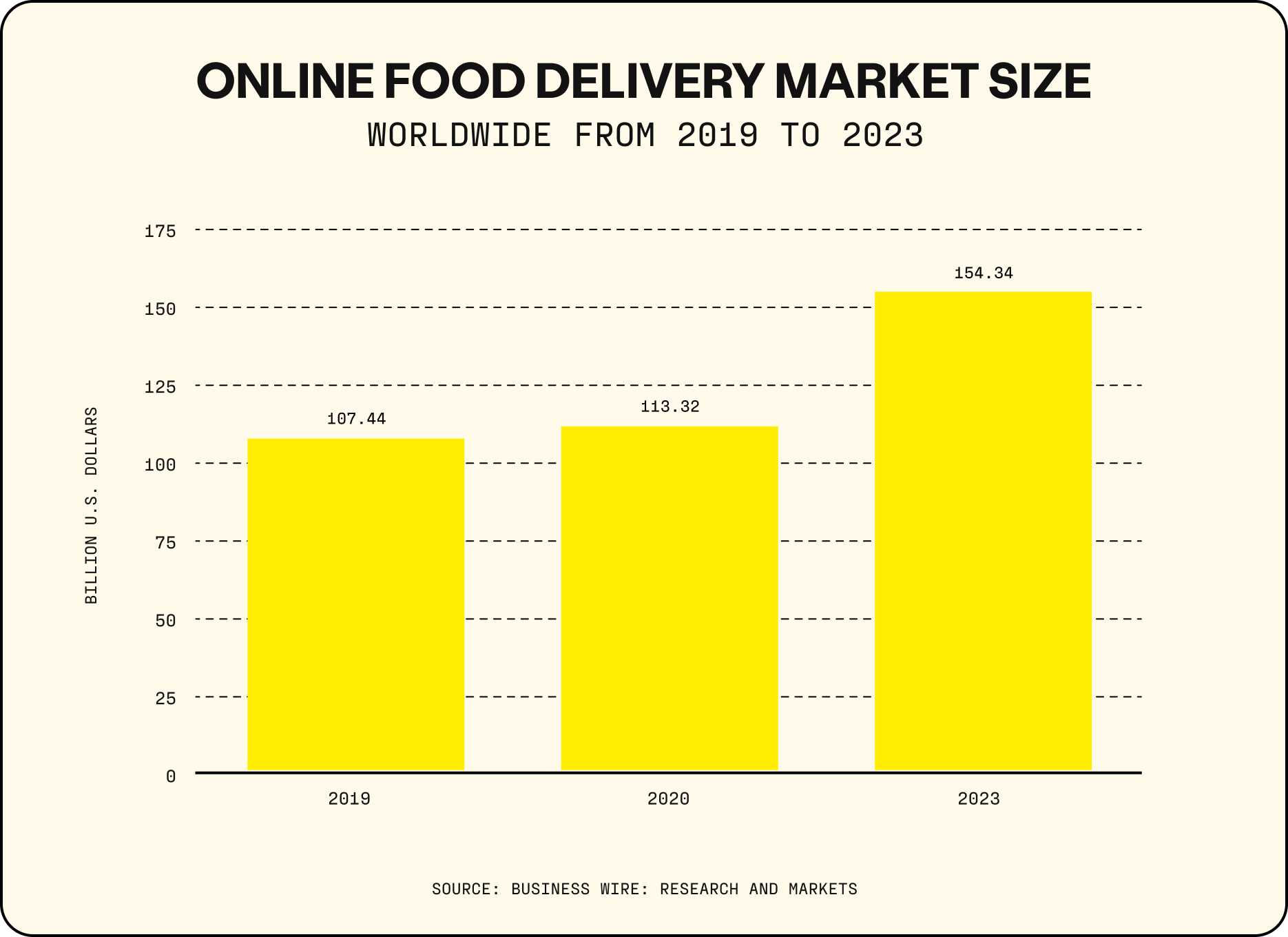
If you’re looking to expand or manage your multiple locations, you need all the benefits of an online ordering system, but you also need to be able to distinguish between the different locations. It’s not only the physical location of your restaurant that is important, but you might have different offerings at different locations.
You may require different marketing for different locations. You’ll want to keep your marketing consistent but since each location serves a different area, you'll also want your marketing to be localized to each store. For example: if one of your stores is in Los Angeles, it probably wouldn’t serve you to market your Austin location the same way. But your brand identity should be the same – you don’t want to confuse customers who visit different stores or dilute your brand.
Check Out This Guide:
CUSTOMER CONNECTIONS ON TAP: A GUIDE TO USING DATA FOR MARKETING
There’s a long list of benefits of using your website or mobile app for online ordering, rather than relying on third-party apps like UberEats, DoorDash and GrubHub. Simply put, direct online ordering helps your restaurant stay in charge of your customer relationships and your bottom line. Direct ordering is even more important for multi-restaurant chains because they often have more loyal customers who don't need as much convincing to order directly. Whereas smaller, mom-and-pop or single-location restaurants have more difficulty converting customers from third-party ordering apps, who likely don't know much about them. Many restaurateurs select a multi-restaurant food ordering system based on cost and popularity, but there are more factors to be considered. We outline several things to consider when selecting a multi-restaurant ordering system below.
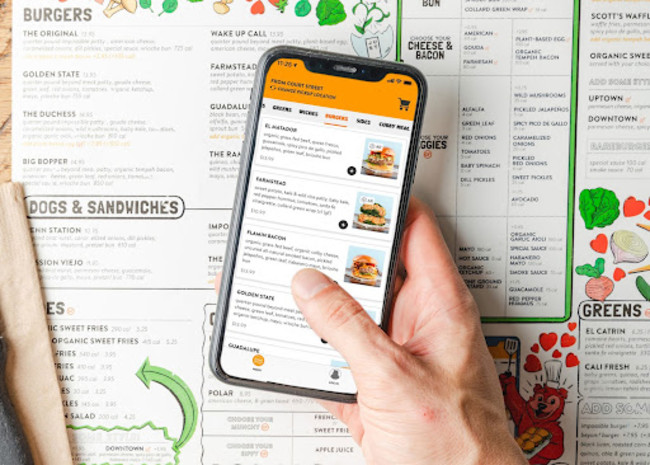
Source: The Spoon
Before selecting a multi-restaurant online ordering system, you need a user-friendly restaurant website and/or mobile application. Your company website and app are the virtual epicenters of your brand. That’s where customers come to look at your menu, order take-out, discover upcoming specials, and other offers. Your website and app – ideally you have both – should also be the source of your brand identity in terms of look, feel, and personality.
A white-label multi-restaurant ordering system could be the ideal choice if you’re planning to start your food delivery service quickly. Developing an online food ordering system from scratch takes serious development time. Sweetgreen is an example of a restaurant chain that had the resources to build its own ordering experience from scratch. However, Sweetgreen, much like other tech companies, raised venture capital and hired an in-house tech team to build their app. They raised $95 million in fundraising and hired a VP of technology, a director of application development, a backend developer, a frontend developer, a product marketer, and two IT specialists, plus a team of other creatives, all to keep their app and website running at peak. It took them a long time – and a lot of cash – to build their own in-house ordering system. While their devotion to creating their own seamless ordering experience is admirable, you don’t need all of that.
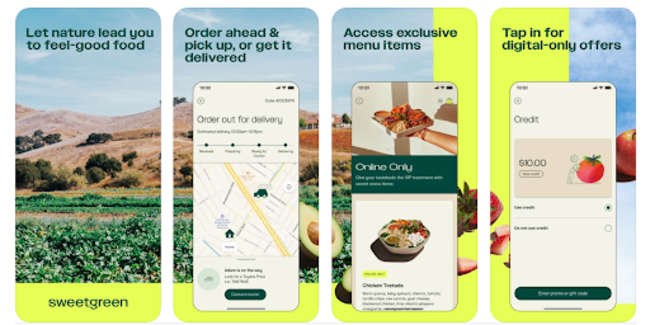
Source: Sweetgreen on App Store
A white-label solution not only saves time but it’s much less expensive. White label solutions are generally fully integrated and ready-made for iOS and Android – you can customize your app and website with your own brand, logo, and identity without building anything from scratch. Instead of investing in product infrastructure or development, you can focus on building your brand and your food. If your website and app are ready to go, let’s look at some things to keep in mind when choosing a multi-restaurant online ordering system.
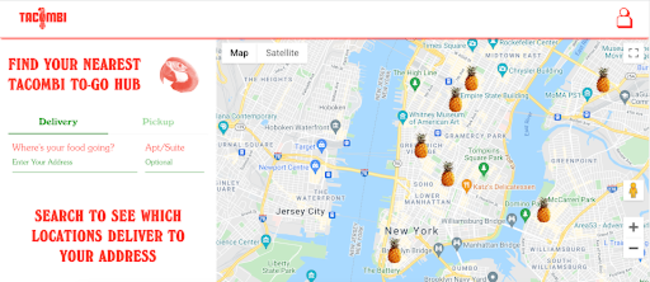
Source: Tacombi
You want to make it easy for both returning and new customers to identify and order from different locations. When a customer wants to place an order, they download your restaurant’s app or visit your website, and they should see a list of locations and delivery zones. They should also be able to type in their address and get shown the closest location. After clicking the location of their choice, they should see the restaurant’s menu items.
An effective multi-restaurant online ordering system should be capable of encompassing your brand. Your system should allow for customization tailored to your branding – after all, this is your digital storefront.
Ideally, there should also be a dashboard or admin panel that allows restaurant owners to keep an eye on business activities per location – like number of customer orders received, number of orders delivered, and sales reports to name a few.
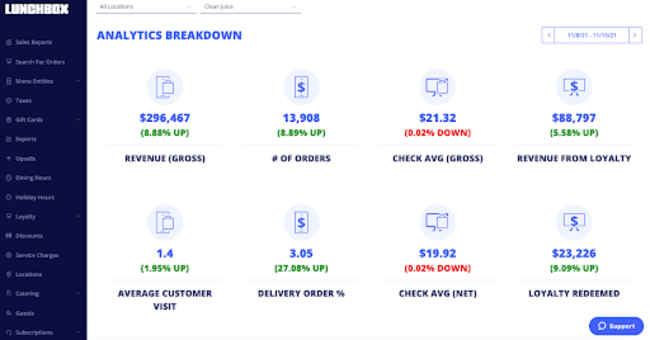
Source: Lunchbox Platform
Your multi-restaurant online ordering system should have a seamless integration into your existing tech stack. One of the most important things is being able to integrate with your POS systems. You want to avoid costly tech revamps as much as possible. Avoid any online ordering systems that lock you into anything vendor-specific (e.g. printers or tablets).
It’s common to select a multi-restaurant food ordering system based on cost. While it’s not the only important factor, the cost is definitely something in need of deliberate consideration. Remember that choosing a white-label solution will immediately reduce the cost required to develop a multi-restaurant ordering platform.
Of course, you’re going to choose a system that fits within your budget, but be aware of fees and costs associated with the offers. There may be extra fees or costs with more modules, system add-ons, and integrations. Tip: choose a system that advocates no fees or extra charges per transaction (ahem, like third-party apps), so you’re charged a flat rate per month or period.
After getting set up on your system, there may be situations where you need to fix some bugs and errors in the platform. Or you might just need some professional assistance. Make sure the multi-restaurant ordering system you’re selecting comes with technical support and maintenance services.
A good multi-restaurant ordering system should handle the technical functionality so you can take your business to the next level of success. Manage your restaurants and not the website or app itself.
You can’t access customer data in third-party apps. You don’t know anything about your customers. Make sure the multi-restaurant online ordering system you choose allows you to access your customer data, that way you can connect with them before and after they buy your food.
Each of your restaurant locations is also going to have unique inventory and food consumption preferences. You may also have different food items or options. Customers at one location may order lots of chicken and waffles, but customers may order more shrimp and grits at another location. All of this customer data should be fed into a central location for you to get actionable insights.
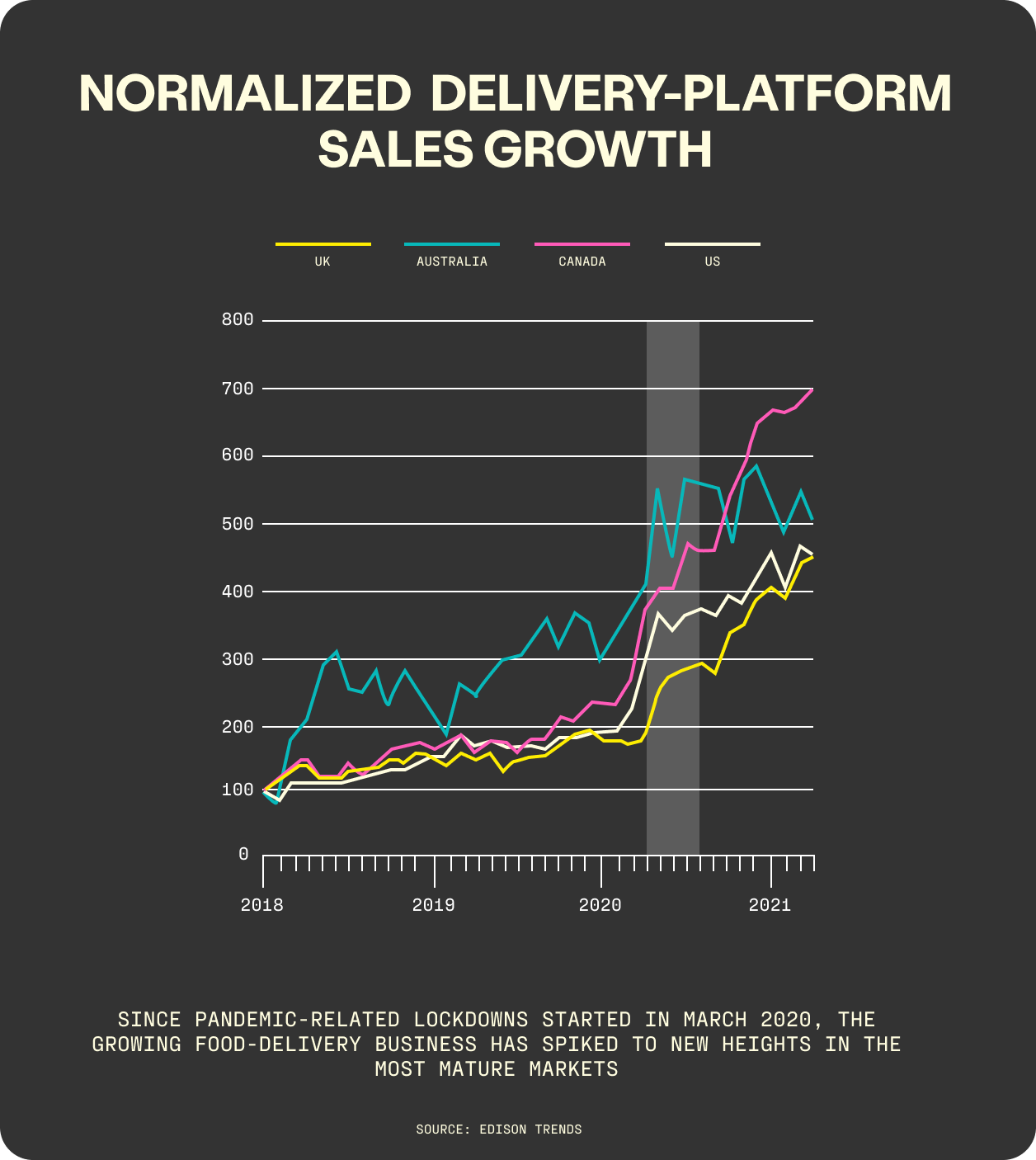
Having multiple restaurant locations doesn’t mean you have to invest in any expensive products or vendors – you just have to find the right system. The multi-restaurant online ordering system you choose should maximize your business’ earnings with minimum investment.
CHECK OUT THIS GUIDE:
Lunchbox is fully customizable and makes it easy for your customers to identify and order from different locations over and over again. You get onboarding support and a customer success manager who watches over your account to make sure you’re maximizing what you can do with the product. You get to keep and access all of your customer data – and you do it all for a flat fee per month. Lunchbox streamlines your efforts so you can focus on other productive restaurant activities like growth, marketing, and increasing profits.
Look for a restaurant management system that will help you run your business efficiently, optimize costs, access customer data, and support you technically. A customer might choose not to eat at your restaurant – at any location – if you don’t have a great ordering system. Take the time to choose and build a solid one.
ENTER YOUR EMAIL TO STAY IN THE KNOW!